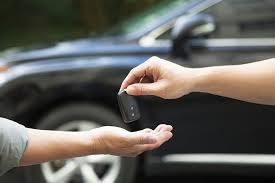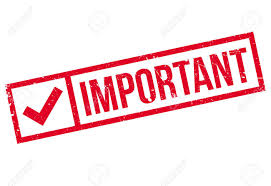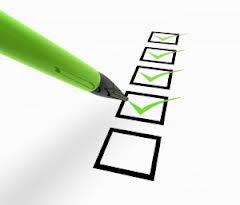How to Transfer Ownership of Car in the Philippines?
So you bought a second hand car and you are out to do ORCR transfer of ownership of your car in the Philippines. The problem is that you don’t know where to start? We have a useful tip in order to avoid inconvenience by getting the notation of “RSU” (request for system update) in your vehicle file. To do this, you have to deal with a few priorities. Note that RSU can really challenge your patience and make you run out of options especially if you are applying for ORCR sangla.

At this point, an RSU file status could be too time consuming. Your case could also serve as a big obstacle in finishing your task to have your auto ORCR name transferred under yours. This is why at Auto Loan Philippines, the step by step guide in car ownership transfer is part of the frequently asked questions. Many of our clients are having a problem accomplishing this easy task. Furthermore, we wanted to make their experience as easy as possible. As experts in the field of ORCR loan for second-hand bought vehicles, we’ve come up with easy to understand guide below.
Top 10 Important Car Ownership Transfer Considerations

The physical details of your bought second hand car matters. Proof to this is the fact as mentioned below it will determine your ownership transfer’s fate. There are also other important considerations to think about. The most important consideration when buying a used car is to make sure that you are given the right documents.
- Car Registration Renewal – To avoid any inconvenience for both with or without encumbrance cars, the CR must be renewed first . This is a must before any move to transfer ownership pursues. You must also make sure you have the original copy of the OR or amount paid for the registration renewal. This is the MVUC or Motor Vehicle User’s Charge.
- Approved MVIR – This is the Motor Vehicle Inspection Report. You can get it by bringing the vehicle to any LTO branch.
- Insurance Certificate of Cover (COC) – The vehicle must have insurance. LTO will confirm that the vehicle has Compulsory Third Party Liability (CTPL) coverage.
- TIN Number of owner and/or seller of the auto
- Emission Test – The test must be accomplished in any nearby LTO branch.
- PNP – TMG – HPG Clearance must be secured – This document serves as security that your vehicle is clear or any legal or accident and crime related liabilities. You will bring the car to any authorized clearance centers. Then, confirm the stencil of engine and chassis number with what is found in the Car Registration receipt. Macro-etching procedure is used to confirm this document.
- Car Physical Details Must Be Identical to CR Details – Any discrepancy will absolutely put your efforts to transfer ownership into jeopardy. These details include the engine and chassis number, color, gear type, series and other important specifications. Changes in color, original car parts like engine, chassis and the like must appear in the records in LTO. Be sure to make necessary verification.
- Know if Car is Company Owned or Personal – When buying a used car, be sure to carefully inspect under whose name the OR/CR is under. If it’s a company car, you will need a copy of the SEC certificate and the Business documents plus 2 valid ID’s of the secretary who signed the Sec Cert and one of the owners or incorporators of the company. For under previous personal ownership, just 2 valid primary IDs and signed / notarized deed of sale. The same signature by the previous owner must be found in the deed of sale of the vehicle being sold. The IDs must also have and 3 specimen signatures appearing beside the photocopied 2 valid IDs of previous owner. Same applies if under company or corporation.
- Clear Copies of Necessary Transfer Documents (see list below) – If what you have is a case where your vehicle is bought from online websites like Facebook Market, Carmudi, Mybenta, Olx and other online selling classifieds, you have to be cautious with certain measures. In this case, you have to be sure to possess or ask for original clear copies of the IDs of previous or original first owner plus a deed of sale. Being a third owner or 4th owner is another issue. In this case, an open deed of sale is best to avoid depreciating further the market value of your car. This applies both if you decide to sell your car later or to pawn it with a lending company or bank. You can read our guide for this here.
- Deed of Sale Must Be Notarized and 2 Valid IDs of Previous Owner is Attached – This is the most important document. Without the deed of sale, no transfer of ownership shall follow. It is strict that this document must be duly notarized by a legitimate law office and duly signed by the vendor and vendee. There must be an attached 2 valid primary IDs of the previous owner.
Requirements for Car ORCR Transfer of Ownership

The following list of documents needed for the car ownership transfer must be accomplished before going to the LTO (Land Transportation Office). Even if with only one of these documents missing, you will be just wasting your time trying to apply for transfer of ownership. Be sure before any application is undergone, that you have completed all documents as listed below.
- Clearance from Philippine National Police-Highway Patrol Group (PNP-HPG)
- Original Certificate of Registration (CR)
- Latest original Official Receipt (OR) of payment
- The car’s original Deed of Sale
- Appropriate insurance cover (CTPL)
- Taxpayer’s Identification Number (TIN)
- Accomplished and approved Motor Vehicle Inspection Report or MVIR
LTO requirements for Vehicle Transfer of Ownership:
1) Original copy of vehicle certificate of registration (CR)
2) Original copy of the official receipt or proof of payment of latest motor vehicle user’s charge (OR)
3) 4 Copies of the original and duly notarized deed of sale/transfer/conveyance
Photocopies of two primary or government-issued valid IDs of both the vendor and vendee (or buyer and seller). Make sure that the photocopies are signed at least three times each on the side
4) If your chosen nearby transacting LTO district office is different from the district office that issued the CR, a confirmation of CR/OR will be deemed necessary
5) PNP/TMG-Traffic Management Group/Highway Patrol Group (HPG) Motor Vehicle Clearance Certificate. You can secure this document by reporting to any authorized PNP/TMG-HPG satellite office. This is for confirmation of your engine and chassis records. (Pasay in Domestic Road / Pasig and Camp Caringal to name a few). This is done by using the macro-etching procedure with the use of a special paint remover. This confirmation is determine whether the corresponding numbers are not tampered in any instance. Note that the validity of this document is 7 working days. Failure to use it within the said period will render it invalid and you have to get another copy, go through the same procedure and pay the same amount.
6) Duly accomplished and approved Motor Vehicle Inspection Report (MVIR)
7) Appropriate Insurance Certificate of Cover (CTPL)
8) Taxpayer’s Identification Number (TIN)
Additional Requirements for Encumbered Vehicles
If the CR encumbrance notation has not yet been removed, you will need extra documents to present. I suggest that before any move to transfer ownership, it is best to have the notation removed by applying to the designated Registry of Deeds (RD). You can refer to an article we wrote here.
1) Original copy of certification of registration encumbered (CRE), in lieu of CR
2) Deed of sale with assumption of mortgage with bank’s conformity (if encumbered)
3) Written consent from the financing company in case of CRE
Different Purposes of Car Ownership Transfer

- Legal – An owner or buyer of a second hand vehicle opting in for ownership transfer may attribute many other legal-related purposes. One is to be sure that he/she is the legitimate and legally registered owner. Second is to make sure that the vehicle does not have any negative legal implications. This will also prove the car was never involved in any form of related vehicular accidents in the street.
- Vehicle Identity – For purpose of identification, the owner must make sure he is the only registered owner of the car.
- For ORCR Sangla Loan Application – The car owner cannot be allowed to get any form of loan using his auto as collateral, if he is not the registered owner. His name should appear in both the OR/CR, RD and LTO system records.
When you want to transfer ownership of any vehicle, your best option is to apply for a loan. Lending companies have a system that will only deduct you a fee to transfer your vehicle ownership under your name.





No Comments
Sorry, the comment form is closed at this time.